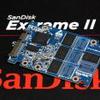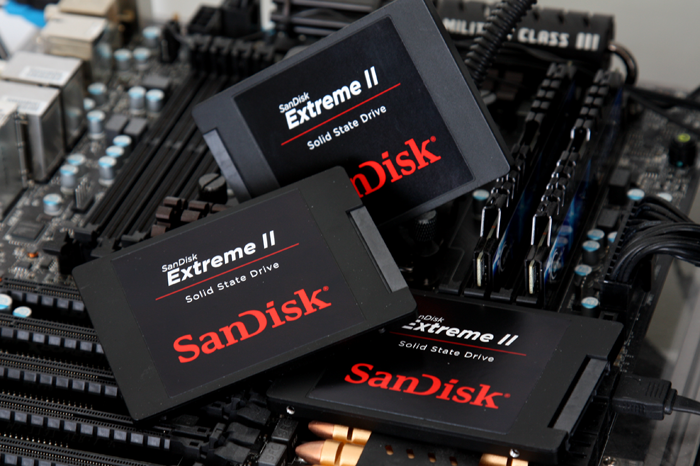What is SATA 3 and 20nm NAND - MLC
SATA 3 explained
SATA 6G aka SATA 3, the latest revision of your SATA storage unit connectors, will increase the bandwidth on the SATA controller from 3 GBit/sec towards 6 GBit/sec. For a regular HDD that is not really very important. But with the tremendous rise of fast SSD drives this really is a large plus. Typically we get 3000 Mbit/s : 8 = 375 MB/sec bandwidth minus overhead, tolerances error-correction and random occurrences. SATA 3 is doubling it up, as such we get 6000 Mbit/sec : 8 = 750 MB/sec (again deduct overhead, tolerances error-correction and random occurrences) of available bandwidth for your storage devices. As you can understand, with SSDs getting faster and faster that's just a much warmed to and welcomed increase of bandwidth. Put Sata III in RAID and you'll have even more wicked performance at hand. Most motherboards offer only two ports per controller though, so you are (for now) limited to RAID 0 and RAID 1 (stripe or mirror). Also there are two controllers currently being used for mainstream, currently the Haswell, Sandy Bridge and Ivy Bridge architecture platforms offer the highest performing solution. Though still fast, any platform using the Marvell 9128 or 9130 will see lower performance scores as the Marvell controllers use a PCI-Express Gen2 x1 lane interface to the system which restricts performance a little. The internal processor in that chipset also limits IOPS by the way.
MLC VS. SLC
At the beginning, memory cells stored just a single bit of information. However, the charge on the floating gate can be controlled with some level of precision, allowing the storage of more information than just 0 and 1. Based on such an assumption the MLC (Multi Level Cell) memory came to exist. To distinguish them, the old memory type was called SLC - Single Level Cell. The decision of choosing between SLC and MLC is driven by many factors such as memory performance, number of target erase/program cycles and level of data reliability. The MLC memory endurance is significantly lower (around 10'000 erase/program cycles) compared to SLC endurance (around 100'000 cycles).
So what about that new 2xnm NAND lifespan?
Newer 19nm, 20nm and 25nm NAND FLASH memory was introduced, designed to be cheaper. The overall lifespan of the ICs has been reduced from 10.000 towards 5,000 program/erase cycles. Rumors are that the numbers for consumer grade 20/25nm NAND flash memory (as used on the SSD tested today) are even lower at 3000 program/erase cycles. But granted, as drastic as that sounds, it's all relative as this lifespan will very likely last longer than any mechanical HDD. Drive wearing protection and careful usage will help you out greatly. With an SSD filled normally and very heavy writing/usage of say 10GB data each day 365 days a year, you'd be looking at roughly 22 full SSD write cycles per year, out of the 3000 (worst case scenario) available. However, all calculations on this matter are debatable and theoretical as usage differs and even things like how much free space you leave on your SSD can effect the drive.


